Mosses, Liverworts, and Lichens
Media
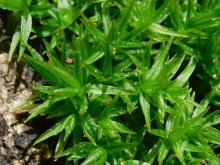
Species Types
Scientific Name
Atrichum spp.
Description
Missouri has five species of starburst mosses (genus Atrichum). They tend to look different depending on whether they are wet or dry. When wet, they look like mass of bright green stars, but when dry, the leaves shrivel, contort, and look dead.
Media
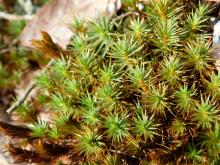
Species Types
Scientific Name
Polytrichum juniperinum
Description
Juniper haircap moss is common and easy to recognize, since it looks like a tiny forest of juniper sprigs. It’s called a haircap moss because the young capsules have densely hairy caps.
Media
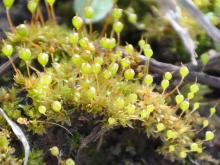
Species Types
Scientific Name
Physcomitrium pyriforme
Description
Urn moss, or goblet moss, is easy to identify in spring: The capsules of this common small moss are green as a gooseberry and are shaped like tiny pears, wide end facing up. Grows in open habitats on disturbed soils.
Media
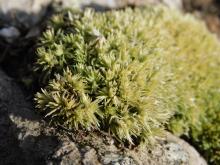
Species Types
Scientific Name
Leucobryum glaucum and Leucobryum albidum
Description
Pincushion mosses, or leucobryum mosses, are whitish green and form pillowlike mounds that may be the size of a pincushion or much larger. Look for them on thin soils of ridges and rock ledges.
Media
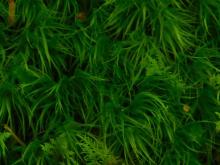
Species Types
Scientific Name
Dicranum spp.
Description
Beautiful components of woodland scenery, our most common broom mosses have glossy, thin, slender-pointed leaves that are quite long and all bend in the same direction, as if being blown by the wind.
Media

Species Types
Scientific Name
Ditrichum pallidum
Description
Golden thread moss forms small, light green or yellowish, rounded, fuzzy-looking hummocks like a cat’s paws. The sporophytes are on remarkably long, slender, yellow, almost translucent stalks.
Media
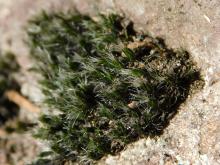
Species Types
Scientific Name
Grimmia laevigata
Description
Silver beard moss grows on dry, exposed rocks and has a coarse texture. Each grayish-green leaf has a long, white, hairlike, slightly curved extension at the tip, giving this moss a silvery cast like a mink coat.
Media
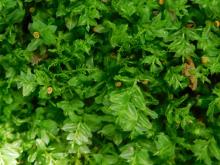
Species Types
Scientific Name
Plagiomnium spp. (formerly Mnium spp.)
Description
Common and easy to recognize, tooth mosses in genus Plagiomnium have several common names. Identify them by their large, oval, transparent, light green, finely toothed leaves that grow on only two sides of the stalk.
Media
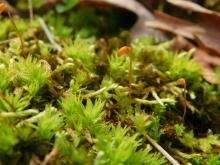
Species Types
Scientific Name
Approximately 315 species and varieties in Missouri
Description
Mosses are small, low plants that form cushions or carpets, usually in damp places. They lack veinlike structures and do not produce flowers or seeds. They release spores from tiny capsules that usually arise on thin stalks.
See Also
About Mosses, Liverworts, and Lichens in Missouri
Mosses, liverworts, hornworts, and lichens seem rather similar, but these organisms are in very different groups. Mosses, liverworts, and hornworts are small, low plants usually found in damp habitats. Unlike more familiar plants, they lack veinlike structures and do not produce flowers or seeds — instead, they produce spores. Meanwhile, lichens are not plants at all: they are a collection of different fungi that have photosynthetic algae living within their tissues.





















